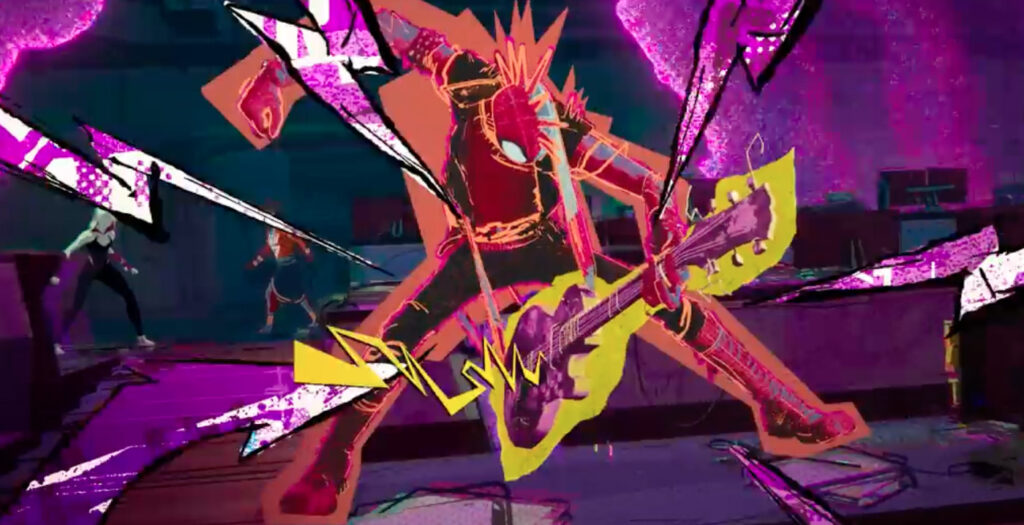Spider-Man: Across the Spider-Verse features a lot of different Spider-People from across (haha) decades of Spider-history. Despite all being connected by their powers (and also catastrophic canon events, as we come to learn), they’re all vibrant and distinct from one another. This was something the first movie established, but with dozens upon dozens of Spider-People in the sequel, Across the Spider-Verse takes everything up to 11. It’s not just their character designs; it’s also the way they’re animated and the style that they’re rendered in.
Perhaps the most impressive Spider-Person — and certainly the one that many fans have latched on to as being the coolest — is Spider-Punk. Voiced by Daniel Kaluuya, Spider-Punk (aka Hobie Brown) is a nonconformist, punk-rock hero who does things his own way. And that extends into how he looks and moves compared to the rest of the cast. Not only is his design like something out of collaged zine, but he also moves in a choppier manner than the rest of the cast.
He is one of the most dynamic characters in the whole movie — and also the one that’s been blowing everyone’s minds with just how wild he looks.
“How the FUCK did they do this,” one Twitter user asked, sharing a clip of Spider-Punk’s chaotically cool intro.
The Spider-Verse animators have been very online and very open to talking about their process, and animation lead Chelsea Gordon-Ratzlaff swung in to respond. They detailed the rules that the animation team had for Hobie, and also clarified that the rules were broken when necessary — a punk-rock approach that Hobie would approve of.
these were our rules for hobie!
– body on 3s
– offset the vest (also on 3s but delayed by a frame or two)
– guitar on 4s
– outline on 2s (only when he’s moving, should remain static when he’s held still)
– cutout around the guitar
What does this all mean? For most animated movies, 24 frames per second is standard. Typically, animators will change poses and details every second frame — or “on the 2s.” But in the case of Hobie, his body pose changed every third frame, making his movement more staccato than the characters around him. But that’s not even the wildest part.
All of Hobie’s separate elements — his vest, his outline, his guitar — move on separate frames. With the vest, which is animated at an offset, that means it’s still changing on the third pose, but one frame off from the body (so if his body moves at frames 3, 6, 9, and 12, the vest moves at frames 4, 7, 10, and 13). Additionally, the different Hobie parts had different textures to them, which changed based on what was going on in the movie. After all, Hobie hates consistency.
When animation studios are confronted with something deeply ambitious that seems impossible, they innovate — and that means developing new software and tools to help them achieve what they want. (Obligatory mention of the groundbreaking snow simulation from Frozen that helped solve the Dyatlov Pass incident.) For Sony, it was no different. Gordon-Ratzlaff says that the “pipeline team invented all kinds of crazy stuff that let us do even crazier stuff in animation.”
And it shows in Across the Spider-Verse, which is by far the most visually daring American animated movie in recent history. It used everything from the first movie as a springboard, launching it to new heights. When Beyond the Spider-Verse comes out next year, it’s sure to go even more above and, well, beyond.
Source : Polygon


